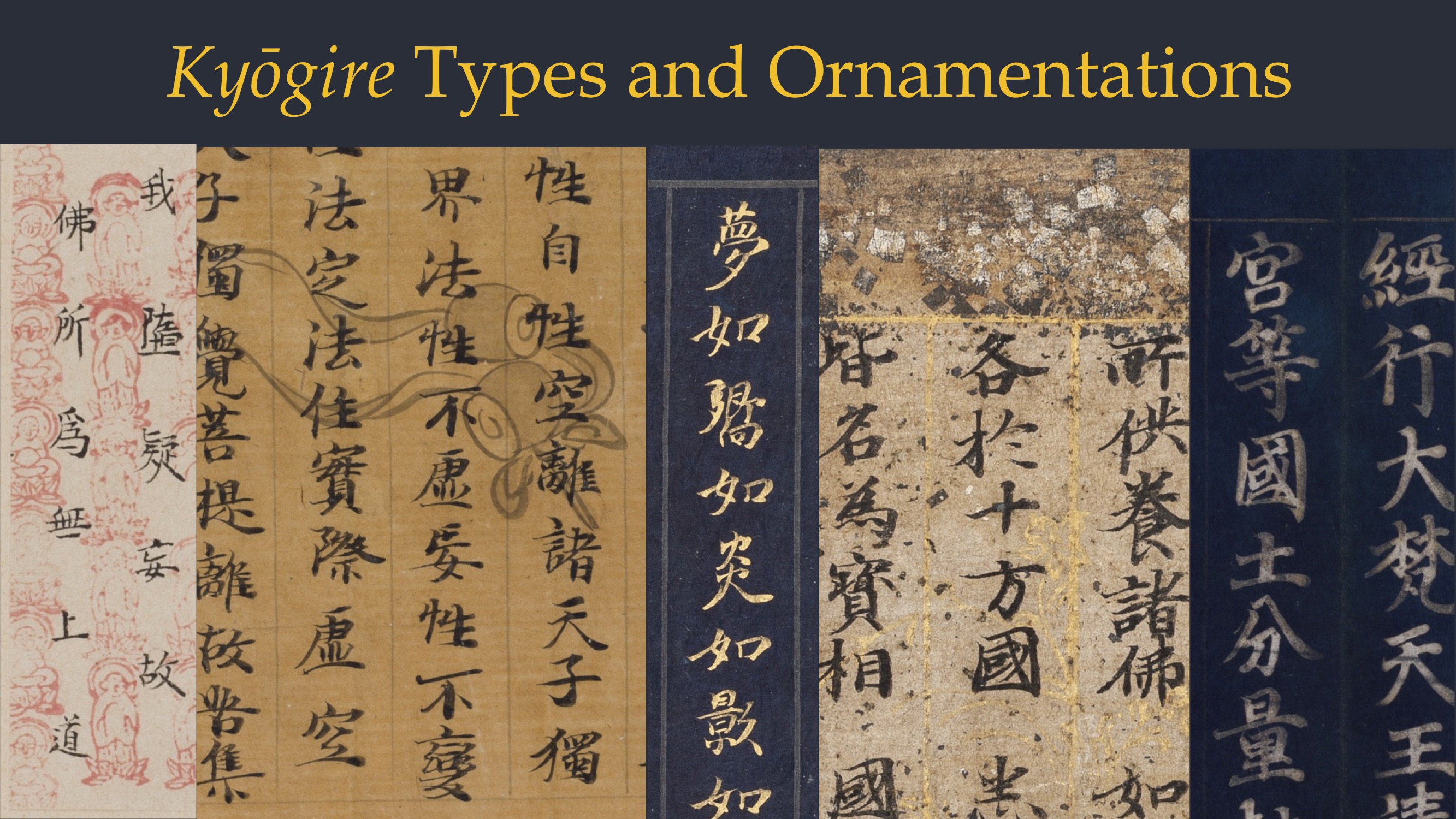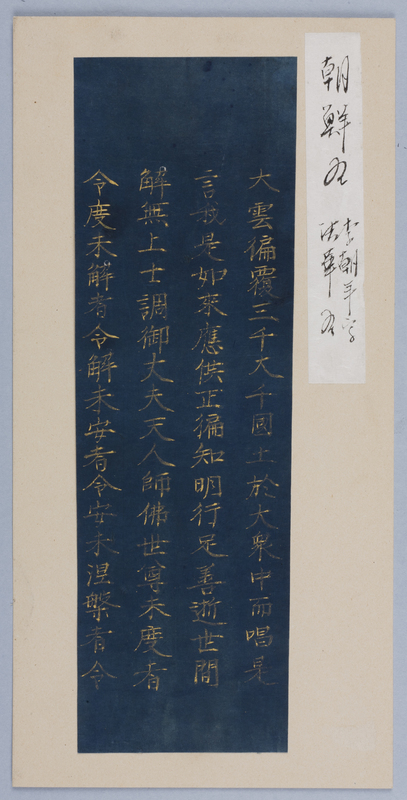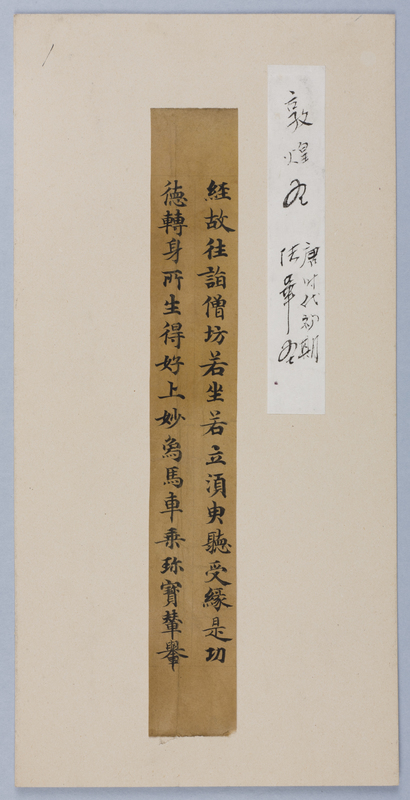
Types of Kyōgire Fragments
The 36 fragments cover samplings of East Asian calligraphic tradition, including two pieces from the Korean peninsula (X2010:1.29 and X2010:1.31). Although there is one fragment attributed to be from Dunhuang (Gansu Province, China; X2010:1.14), based on its calligraphic style, it is most likely a Nara-period example that is emulating the continental trend in calligraphy.
The two pieces from the Korean peninsula are both on indigo-dyed paper, calligraphy done in gold (1.29), and silver (1.31). Silver or gold calligraphy on indigo-dyed paper was the preferred method for copying sutras particularly in the Goryeo Dynasty (918-1392), where a distinct sutra-copying tradition flourished. Characteristically, a scriptural copy produced on the Korean peninsula has a much wider margin at the top of the paper than the bottom.
Furthermore, following the convention of the thirteenth-century Goryeo sutra, X2010:1.31 only has fourteen characters in one line, as opposed to the standard seventeen in Japan. The size of the characters, combined with the wide spacing at the top margin, gives the Goryeo scriptural copies a bold and dynamic look (Fig. 17, see image below).
The remaining fragments are from Japan. There are four fragments from the Nara period, over a third (thirteen fragments) from Heian, four from Kamakura (1192-1333), two from Nanboku-chō (1333-1392), five from Muromachi (1392-1573), two more from Azuchi-Momoyama (1573-1615), and finally three from the Edo period (1615-1868).
You can see from the mini video that the fragments in this set are cut into similar shapes and sizes. For this reason, at first glance, except for some variations in paper color, it might be a little hard to tell one fragment apart from another. However, when we look more closely, we realize that this collection is an excellent sampling of the rich variety in sutra ornamentation and calligraphic styles.



